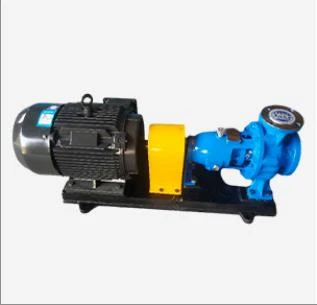English
- Afrikaans
- Albanian
- Amharic
- Arabic
- Armenian
- Azerbaijani
- Basque
- Belarusian
- Bengali
- Bosnian
- Bulgarian
- Catalan
- Cebuano
- Corsican
- Croatian
- Czech
- Danish
- Dutch
- English
- Esperanto
- Estonian
- Finnish
- French
- Frisian
- Galician
- Georgian
- German
- Greek
- Gujarati
- Haitian Creole
- hausa
- hawaiian
- Hebrew
- Hindi
- Miao
- Hungarian
- Icelandic
- igbo
- Indonesian
- irish
- Italian
- Japanese
- Javanese
- Kannada
- kazakh
- Khmer
- Rwandese
- Korean
- Kurdish
- Kyrgyz
- Lao
- Latin
- Latvian
- Lithuanian
- Luxembourgish
- Macedonian
- Malgashi
- Malay
- Malayalam
- Maltese
- Maori
- Marathi
- Mongolian
- Myanmar
- Nepali
- Norwegian
- Norwegian
- Occitan
- Pashto
- Persian
- Polish
- Portuguese
- Punjabi
- Romanian
- Russian
- Samoan
- Scottish Gaelic
- Serbian
- Sesotho
- Shona
- Sindhi
- Sinhala
- Slovak
- Slovenian
- Somali
- Spanish
- Sundanese
- Swahili
- Swedish
- Tagalog
- Tajik
- Tamil
- Tatar
- Telugu
- Thai
- Turkish
- Turkmen
- Ukrainian
- Urdu
- Uighur
- Uzbek
- Vietnamese
- Welsh
- Bantu
- Yiddish
- Yoruba
- Zulu
Telephone: +86 13120555503
Email: frank@cypump.com
Dec . 04, 2024 10:28 Back to list
Cost Analysis of Slurry Pumps and Their Market Trends
Understanding Slurry Pump Prices Factors and Insights
Slurry pumps are essential components in various industries, particularly in mining, construction, and wastewater management. These pumps are designed to handle abrasive and viscous mixtures, often containing solids suspended in liquid. Given their critical role, understanding the pricing of slurry pumps is vital for businesses seeking to invest in or upgrade their pumping solutions. This article will explore the key factors influencing slurry pump prices and provide insights for potential buyers.
1. Type of Slurry Pump
One of the primary factors determining the price of slurry pumps is the type of pump required for specific applications. There are several types of slurry pumps, including centrifugal, positive displacement, and submersible pumps. Centrifugal slurry pumps are the most common and typically less expensive, while positive displacement pumps, known for their high efficiency and pressure capabilities, can be pricier.
Submersible slurry pumps, designed to operate when submerged in the slurry, often come with additional features and complexities that can drive their prices higher. Thus, understanding the specific application requirements is crucial in selecting the right pump type and budget.
2. Materials of Construction
The materials used in the construction of slurry pumps significantly influence their price. Pumps made from high alloys, stainless steel, or heavy-duty rubber tend to be more expensive due to their durability and resistance to corrosion and wear. For example, in mining applications, where pumps handle highly abrasive materials, a higher-grade material is necessary, leading to increased costs.
Conversely, pumps made from standard cast iron or plastic can be more affordable but may not withstand challenging conditions for long. When considering the initial price, it’s also important to factor in the potential long-term costs associated with maintenance and replacements.
slurry pump price

Another key aspect impacting slurry pump prices is the size and capacity of the pump. Larger pumps with higher flow rates and solid handling capabilities generally command higher prices. Businesses need to assess their operational requirements to determine the appropriate size and capacity, ensuring they’re not overspending on an unnecessarily large pump or risking inefficiencies with a smaller model.
4. Brand and Manufacturer Reputation
Brand reputation plays a vital role in the pricing of slurry pumps. Established manufacturers with a history of reliability and customer satisfaction often charge a premium for their products. However, investing in a reputable brand can result in better performance, warranty, and service support, ultimately saving money on repairs and replacements. Be sure to research different manufacturers and read customer reviews when making a purchasing decision.
5. Customization and Engineering Solutions
Some projects may require customized slurry pumps tailored to specific needs. Customization can include modifications in dimensions, power specifications, or additional features like variable speed drives. While customized solutions can lead to higher upfront costs, they may provide greater efficiency and longevity in the long run, making them cost-effective options for specialized applications.
6. Maintenance and Operational Costs
While the initial purchase price of a slurry pump is significant, long-term operational and maintenance costs should not be overlooked. Factors such as energy consumption, wear parts, and the simplicity of maintenance can greatly influence the overall cost of ownership. Investing in higher-quality pumps with lower maintenance requirements may entail higher initial costs but lead to substantial savings over time.
Conclusion
In summary, slurry pump prices vary widely based on factors such as type, materials, size, brand reputation, customization, and long-term operational costs. It’s essential for buyers to conduct thorough research and consider both initial investment and long-term expenses when selecting a slurry pump. By understanding these factors, businesses can make informed decisions that enhance operational efficiency while adhering to budget constraints. As industries continue to evolve, investing in the right slurry pump can provide significant returns in productivity and reliability.
-
ISG Series Vertical Pipeline Pump - Chi Yuan Pumps Co., LTD.|Advanced Hydraulic Design&Energy-Efficient Solutions
NewsJul.30,2025
-
ISG Series Vertical Pipeline Pump - Chi Yuan Pumps Co., LTD.
NewsJul.30,2025
-
ISG Series Vertical Pipeline Pump - Chi Yuan Pumps Co., LTD.|energy-efficient fluid handling&industrial durability
NewsJul.30,2025
-
ISG Series Vertical Pipeline Pump - Chi Yuan Pumps | Advanced Engineering&Industrial Efficiency
NewsJul.30,2025
-
ISG Series Pipeline Pump - Chi Yuan Pumps | High Efficiency, Energy Saving
NewsJul.30,2025
-
ISG Series Vertical Pipeline Pump-Chi Yuan Pumps|High Efficiency&Reliable Performance
NewsJul.29,2025










